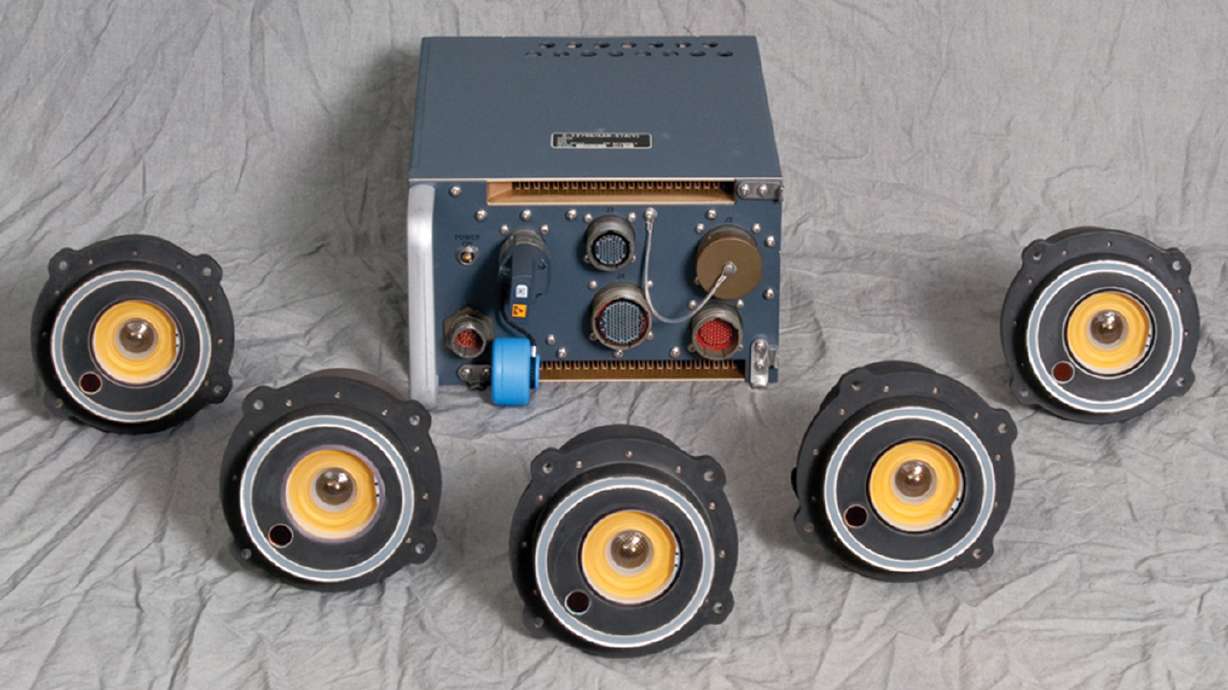Estimated read time: 2-3 minutes
This archived news story is available only for your personal, non-commercial use. Information in the story may be outdated or superseded by additional information. Reading or replaying the story in its archived form does not constitute a republication of the story.
NASHUA, N.H.--(BUSINESS WIRE)--Apr 16, 2014--BAE Systems’ Common Missile Warning System ( CMWS ) completed a Critical Design Review for its Integrated Aircraft Survivability Equipment (IASE) software update. The successful review marks a key milestone in the advancement of integrated infrared threat detection for rotary-wing, transport, and tactical aircraft.
BAE Systems' enhanced Common Missile Warning System. (Photo: BAE Systems)
“Our Common Missile Warning System has nearly a decade of proven success, flying more than 2 million in-theater combat hours and saving countless aircraft and lives,” said Bill Staib, director of Threat Management Solutions at BAE Systems. “The newest version builds on the success of the existing technology and delivers enhanced integration and survivability capabilities to our armed forces.”
The review highlighted the system’s ease of integration with other survivability technology, including the ability to accept data from both radar and laser warning receivers. By providing the U.S. Army with its first IASE capability, BAE Systems will reduce pilot workload and improve survivability by consolidating critical mission data into a single Pilot Vehicle Interface. The system’s open architecture also enables threat data to be integrated into multiple platforms without costly upgrades or additional equipment.
Additionally, in a series of U.S. military sponsored events in 2013, BAE Systems showcased another CMWS innovation — a next-generation Enhanced Ultra-Violet (EUV) Threat Warning Sensor that improves the CMWS system’s core detection capability. With the EUV sensor, the system can detect threats at longer ranges in harsher conditions and better distinguish from clutter, quickly and accurately locating threats for heightened countermeasure effectiveness.
The IASE and EUV product updates come on the heels of the recent CMWS Gen3 release that included the initial U.S. Army fielding of the system’s hostile fire indication to detect and evade small arms fire and new data recording. The recording capabilities provide users with immediate, detailed post-mission analysis to allow for further survivability actions and improvements.
Additional information regarding BAE Systems’ threat management solutions can be found at www.baesystems.com/threat-management.
Photos/Multimedia Gallery Available:http://www.businesswire.com/multimedia/home/20140416005794/en/
CONTACT: BAE Systems
Paul Roberts, +1 603 885 4504
paul.a.roberts@baesystems.com
www.baesystems.com/US
KEYWORD: UNITED STATES NORTH AMERICA NEW HAMPSHIRE
INDUSTRY KEYWORD: MANUFACTURING AEROSPACE DEFENSE CONTRACTS OTHER DEFENSE
SOURCE: BAE Systems
Copyright Business Wire 2014
PUB: 04/16/2014 10:00 AM/DISC: 04/16/2014 10:00 AM
http://www.businesswire.com/news/home/20140416005794/en
Copyright © The Associated Press. All rights reserved. This material may not be published, broadcast, rewritten or redistributed.









